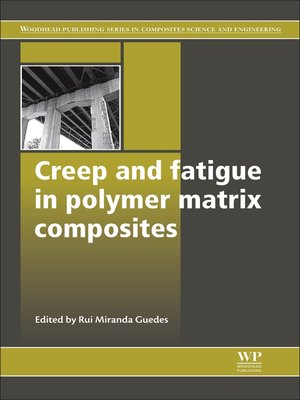Creep and Fatigue in Polymer Matrix Composites
ebook ∣ Woodhead Publishing Series in Composites Science and Engineering
By Rui Miranda Guedes

Sign up to save your library
With an OverDrive account, you can save your favorite libraries for at-a-glance information about availability. Find out more about OverDrive accounts.
Find this title in Libby, the library reading app by OverDrive.



Search for a digital library with this title
Title found at these libraries:
| Library Name | Distance |
|---|---|
| Loading... |
Creep is the tendency of materials to deform when subjected to long-term stress, particularly when exposed to heat. Fatigue phenomena occur when a material is subjected to cyclic loading, causing damage which may progress to failure. Both are critical factors in the long-term performance and reliability of materials such as polymer matrix composites which are often exposed to these types of stress in civil engineering and other applications. This important book reviews the latest research in modelling and predicting creep and fatigue in polymer matrix composites.
The first part of the book reviews the modelling of viscoelastic and viscoplastic behaviour as a way of predicting performance and service life. Part two discusses techniques for modelling creep rupture and failure. The final part of the book discusses ways of testing and predicting long-term creep and fatigue in polymer matrix composites.
With its distinguished editor and international team of contributors, Creep and Fatigue in Polymer Matrix Composites is a standard reference for all those researching and using polymer matrix composites in such areas as civil engineering. - Reviews the latest research in modelling and predicting creep and fatigue in polymer matrix composites
- A specific focus on viscoelestic and viscoplastic modelling features the time-temperature-age superposition principle for predicting long-term response
- Creep rupture and damage interaction is examined with particular focus on time-dependent failure criteria for lifetime prediction of polymer matrix composite structures illustrated using experimental cases







